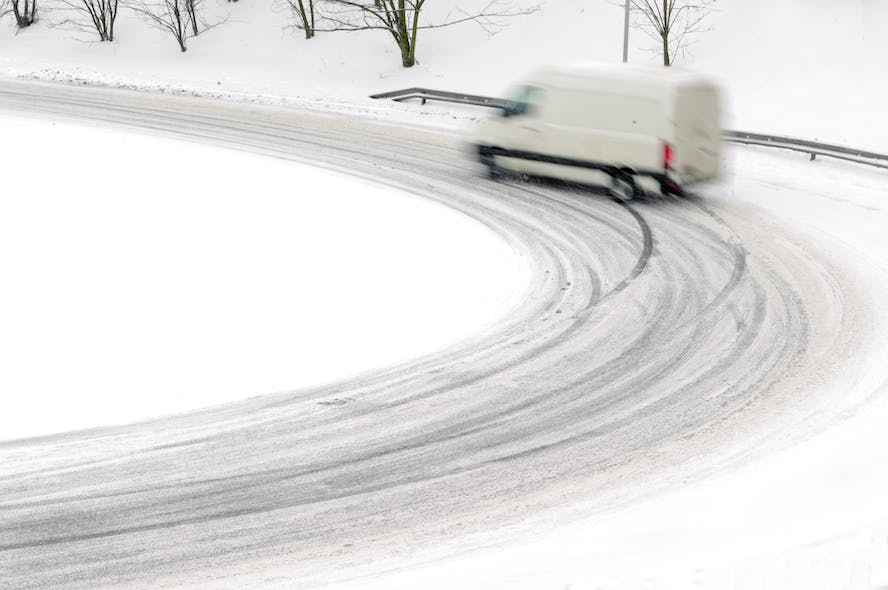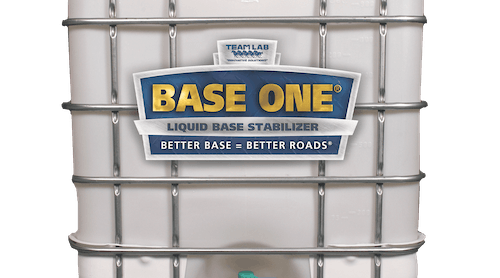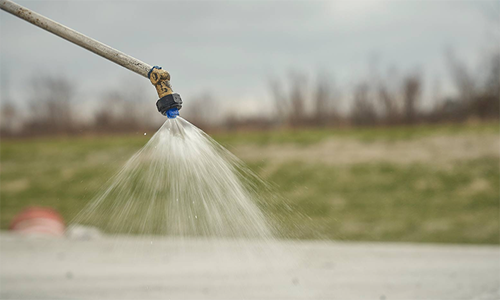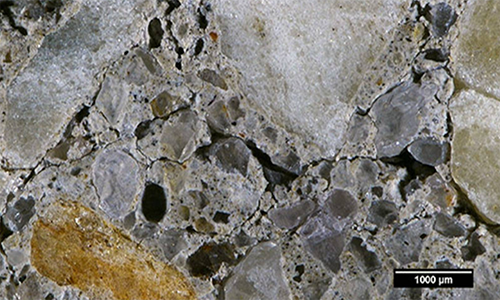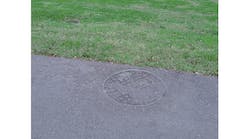By Jen Lilienstein, Contributing Author
Salt has been used to de-ice roads in the United States since the 1930s, and its use across North America has exploded in the past 50 years. More than 20 million metric tons of salt are poured on U.S. roads each winter, according to an estimate by the Cary Institute of Ecosystem Studies in New York. One such example is Maine, where about 493,000 tons of the rock salt was used in the winter of 2019-20 – 787 pounds for every Maine resident, or 11 tons per lane mile of road. And the environmental costs of this strategy are growing.
While sodium chloride or salt is effective and relatively inexpensive, it can destroy a soil’s structure and cause erosion, damage, and kill vegetation, while contributing to the corrosion of metal bridges and motor vehicles.
It can also seep into groundwater and run off into surface waters, contaminating wildlife habitats, and potentially affecting drinking water.
The challenge with salt application — particularly near water ways — is that the problem compounds each year.
Unfortunately, unlike most other pollutants, chlorides do not dilute or biodegrade; instead, they accumulate in surface waters (lakes, streams, and ponds), groundwater, and soils.
Local, regional, and national governments are starting to pay attention to salinity levels in ground and surface water and are preparing for regulations, as it has become clear that reducing environmental impacts are key priorities for constituents throughout North America. As a result, environmental metrics related to salt usage have become increasingly important to snowfighting agencies and their subcontractors.
The chlorides that take a heavy toll on the environment will likely remain around for some time for two primary reasons:
The majority of snowfighting professionals are familiar with their use as it relates to how to keep our roadways clear.
Salts typically require less upfront investment than some other options that may be more environmentally friendly.
However, as the environmental costs of traditional snow and ice removal tactics mount, more operations leaders will look to alternatives.
Improvement through managing waste
Effective stewardship requires a lot more than electric equipment and organic products. For example, conservation and managing waste are relatively simple initiatives to manage risk.
Understanding how much salt needs to be applied, and when, is a crucial part of salt and ice management.
Luckily for agencies these days, they’re not flying blind. In fact, enough research has accumulated that salt application rate guidelines have been established through the Sustainable Salt Initiative and the Salt Institute’s concept of “sensible salting,” which it defines as “applying the right amount in the right place at the right time.” With a mission to promote roadway safety, the Salt Institute developed a course to promote “sensible salting,” This same approach can be used to minimize regional environmental impact.
Improvement through pre-wet
In the 1970s, the Michigan Department of Transportation (MDOT) conducted pre-wetting experiments that have since been replicated and confirmed many times. The results were dramatic. When salt was placed dry (without pre-wet), 30% ended up outside the roadway. However, when the materials had been applied with pre-wet, only 4% ended up off the highway. More recent studies have been going on in Europe and a few places in the US looking at higher rates of pre-wet on the order of 30-70 gallons of brine per ton of dry. The data appears to suggest that higher levels of pre-wet improve salt retention and enables it to act more effectively and efficiently. There are a wide variety of basic and advanced brine options for pre-wet – it all comes down to what you can most easily obtain.
Improvement through calibration
Another easy step to a more environmentally friendly snow removal program is to better calibrate spreading and temperature monitoring equipment, so only the amount needed is actually used. Phil Sexton, Managing Director of WIT Advisers, estimates that maybe 20 % of snow removal professionals are able to measure how much they’re using. The others may use up to four times the amount needed. Can you think of any other commodity you can purchase such as fuel without it being properly measured and verified?
Road temperature monitoring
SWiM guidelines encourage advanced processes and technology that calibrate real time road conditions including air and surface temperatures. These types of air and road temperature monitoring devices ensure proper deployment of anti-icing and de-icing materials to the road surface, as well as maximize effectiveness and reduce material costs.
Calculating the amount of ice melt is a very important piece of a winter ops strategy, since optimal salt usage should be based on surface and air temperatures. Surface temperatures can be taken by a handheld infrared sensor or by a truck-mounted unit. Using a salt usage calculator is a great way to determine the recommended product application for a certain product according to surface temperatures.
Spreader controller-based materials tracking
A best practice is to calibrate your salt spreaders before the season starts and two or three times during the season to make sure your application rate has not changed. By calibrating spreaders, this ensures you are not putting down excess material, reducing environmental exposure, and maintaining your budget.
Pittsburgh’s strategy was to mortgage its future salt budget to pay for improvement in calibrating, tracking, and dispensing capabilities. The expectation was that implementing the project would result in significant savings in total salt usage by better monitoring their spreader-controller metrics, so that over a number of years the salt trust fund would be “repaid” by the reduced salt expenditures.
In the four winter seasons since the implementation of their SkyHawk telematics system, Pittsburgh has realized a 59% reduction in salt usage over the average of the prior 4 years. How? By calibrating their trucks, they discovered an overuse of the blast button and came up with a clear series of conditions under which the blast button could be used, and because they now had the instrumentation on their vehicles, they could monitor the blast button.
An additional environmental benefit was realized because drivers were not reloading as often, so expensive fuel costs were minimized.
Top tip: When precise calibration is a key performance indicator, it’s best to work with a team that has certified partners, such as Force America, Cirus, Epoke, Bosch, Dickey-John, RoadWatch, Quixote et. al. for optimal data accuracy.
Improvement through level of service (LOS)
When LOS expectations are outlined, you can easily see when expectations are met, or perhaps being over-serviced.
Through advanced route planning and monitoring available via the FOCUS by TELUS platform, the City of Brampton, ON has been able to reduce fuel usage, salt usage, and overtime. As a result, snow and ice is cleared faster, improving citizens’ mobility while wasting less fuel, resulting in fewer carbon emissions, and enabling the city to meet additional sustainability targets.
Improvement through better dump locations
Regardless of how much and what de-icers a given locale chooses to use, where the resulting removed snow ends up is the most important environmental consideration. In New Hampshire, state officials require the placement of a silt fence between snow dumps and any nearby waterways and have mandated that snow storage areas be at least 400 feet from municipal wells.
Improvement through storage strategies
Having the appropriate amount of salt is extremely important, but that material must be stored properly as well. Salt that is not stored properly will lead to additional environmental headaches. Top tips include:
Storing salt inside a facility with a door where weather can not affect it in any way.
Facing the door away from the predominate direction of incoming weather.
Containing any runoff from the facility.
Improvement through de-icing alternatives
Although some de-icing solutions are more environmentally friendly than others, it’s important to note that chemical misuse is the overriding factor as it relates to environmental harm.
Beet juice is a popular ice melt option that lowers the freezing point of water and helps deicers stick to the ground better. It is not corrosive to vehicles and reduces the amount of chloride deicers needed to clear walkways. Beet juice is widely considered to be an environmentally friendly option, though further research is needed to corroborate this claim.
Calcium magnesium acetate is also considered to be a more sustainable ice melt option. It has low corrosion impact and is rated about as corrosive as tap water. It is safer for the environment and is fully biodegradable. However, due to its expense, it is typically used on concrete areas that cannot suffer any damage such as parking garages.
Other new technologies don’t require materials application at all, such as porous pavement, which is being engineered to reduce runoff from roads and reduce snow and ice cover. Porous or permeable pavement allows standing water to seep through, removing water from roads that would normally go through freeze-thaw periods, thus preventing ice formation on the roads. A recent study showed that the low amounts of ice/snow accumulating on porous pavement led to a 77% reduction in annual salt used for maintenance.
Improvement through incentives
Incentivize efficient production and material/salt use, thus preventing waste by eliminating budgets and payment structures that are solely based on quantities of time and materials.
Materials outputs can be analyzed per event, per vehicle, per operator. Tracking this data with an aftermarket salt tracking GPS-enabled technology or from a salt spreader manufacturer’s optional tracking equipment will enable an easier, reliable and more efficient option than paper tracking. (And, when you get right down to how long it takes to track this data on paper, the solutions are, ultimately, more affordable than manual tracking.)
Combining tactics yields better results
Britain’s Salt Association emphasizes that salt had a low environmental impact when used responsibly. “As with all highway maintenance activities, there are environmental implications from winter road maintenance,” the organization said in a statement. “Highways depots, spreading vehicles and the de-icing agent all contribute, but with good management, this burden can be minimized.”
Case in point
The Maryland Department of the Environment (MDE) spearheaded an effort to reduce the amount of salts entering rivers, streams, and groundwater by working with state agencies and local jurisdictions on new salt application strategies, including use of:
improved weather forecasting,
using the right amount of salt,
targeting roads in most need of treatment,
using brine to reduce overall salt usage and
increasing training for employees and contracted equipment operators.
These combined efforts have helped the Maryland DOT’s State Highway Administration to reduce its overall salt usage up to 50 percent.
Most importantly…improvement through information sharing
Stronger links between university research, environmental monitoring, and winter ops teams are needed. Data sharing is key, as municipalities throughout North America are confronting this issue in different ways and can learn a lot from trials. Conferences like the APWA’s North American Snow Conference, PIARC, or Professional Snowfighters Association webinars can help facilitate this type of information exchange.
Overall, while agencies often evaluate their performance metrics in different ways – from time, to bare lane conditions, to driving condition categories – reimagining performance goals and measures in winter maintenance operations can have a significant impact on a wide variety of sustainability targets across the board, in addition to meeting an agency’s overarching mission and directives. As leaders develop and/or modify roadway clearance KPIs that balance cost, environmental impacts, and customer expectations for mobility, we’ll all be better off. R&B
Jen Lilienstein runs marketing for FOCUS by TELUS and SkyHawk by TELUS.
